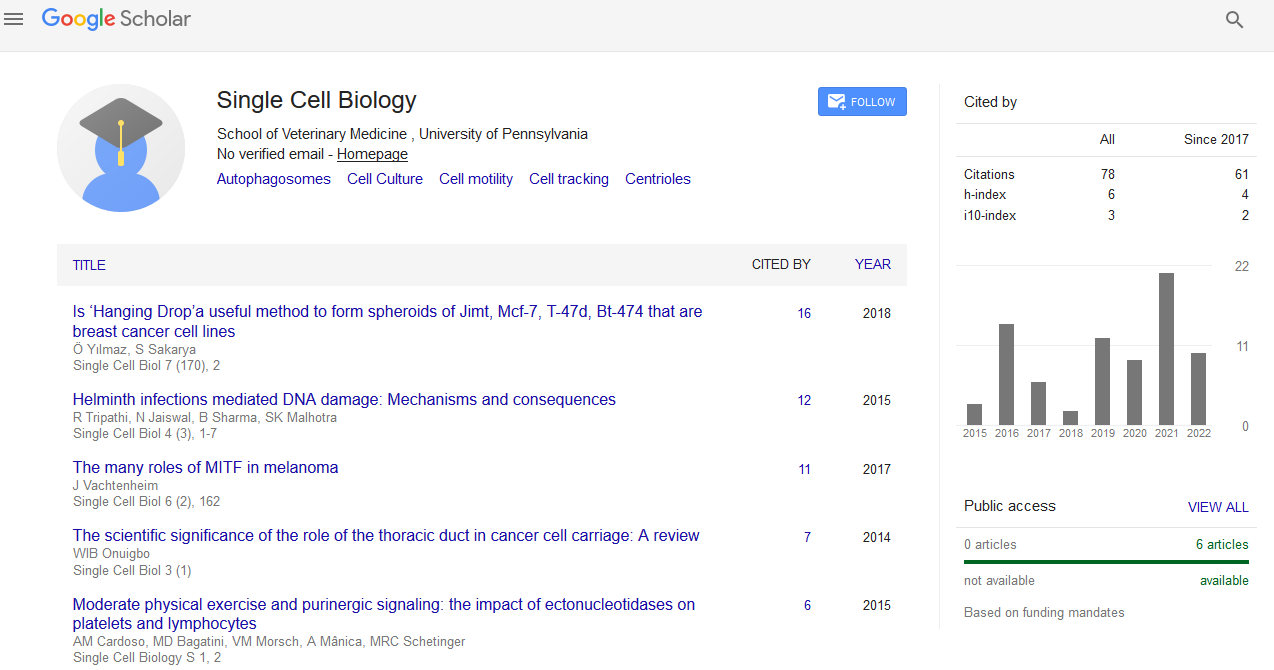PMC/PubMed Indexed Articles
Indexed In
- ResearchBible
- CiteFactor
- RefSeek
- Hamdard University
- EBSCO A-Z
- Publons
- Geneva Foundation for Medical Education and Research
- Euro Pub
- Google Scholar
Useful Links
Share This Page
Journal Flyer

Open Access Journals
- Agri and Aquaculture
- Biochemistry
- Bioinformatics & Systems Biology
- Business & Management
- Chemistry
- Clinical Sciences
- Engineering
- Food & Nutrition
- General Science
- Genetics & Molecular Biology
- Immunology & Microbiology
- Medical Sciences
- Neuroscience & Psychology
- Nursing & Health Care
- Pharmaceutical Sciences
Abstract
A worldwide research update of Cobia (Rachycentron canadum): a promising fish for warmwater marine aquaculture
Rodriguez-Estrada
A worldwide research update of Cobia (Rachycentron canadum): a promising fish for warmwater marine aquaculture Rodriguez-Estrada, Uriel1 . 1 . SAGARPA (Secretariat of Agriculture, Livestock, Rural Development, Fisheries and Food outlook of Mexico´s government), Veracruz, México. Cobia (Rachycentron canadum), is considered to be one of the most suitable candidates for the future of warm, open-water marine fish aquaculture in the world. It represents one of the highest potential because of its most desirable traits, such as rapid growth rate (up to 10 kg in 1 year), good flesh quality, adaptation, and tolerance to variations in temperature and salinity. Throughout the years, cobia (R. canadum) has been researched since 1975. Currently, China is the leading country producing scientific publications in different aspects of cobia research. The first investigation on this species was reported in North Caroline were a collection of wild caught cobia eggs was conducted. Posterior researchers concluded that cobia (R. canadum), had a good aquaculture potential because of its rapid growth and good flesh quality. Other initial studies were conducted in USA and Taiwan (late of 1980s and early 1990s) were researchers studied several aspects: spawning, large quantities of cobia (R. canadum) fry production and grow-out of juveniles in near shore cage systems. Since then, cobia (R. canadum) research has focused its interest in different aspects: species description (taxonomy, distribution, biology and life history), fisheries (environment, capture, processing), reproduction, physiology (metabolism, toxicology, health), pathology (bacterial diseases, viral diseases, parasites, diagnosis, prevention and treatment), nutrition (nutritional requirements, feed formulations, feeding regimes, live / fresh food, additives), genetics, and aquaculture practices (cage farming, inland farming, culture management, economics). This presentation, analyses the historical progress, most recent research advances and future prospects of cobia (R. canadum) research worldwide. Keywords— Cobia, Rachycentron canadum, research, worldwide

